|
Common Types of Electrical Wiring Used In Homes
Your home is wired with different types of wire. Each has its specific use to accommodate the load and conditions it is exposed to. Letís examine what each type is and how it is used in the homeís electrical system. 1. Triplex Wire 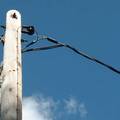 Triplex is an aerial cable that the utility _______ uses to feed the power pole. This wire ties to the wires sticking out of the weather head. 2. Main Feeder Wires 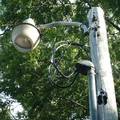
These wires are usually type THHN wire and are rated for 125% of the load required. These are usually black insulated wires coming out of the service weather head. 3. Panel Feed Wires 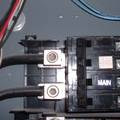
These wires are also type THHN, like the main feeders. A typical 100-amp service would have a #2 THHN set of wires. They would then be rated at 125 amps. This would protect the wires if the amperage was a full 100 amps. 4. Non-Metallic Sheathed Wire (NM) 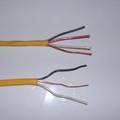
This wire, commonly called Romex, is a plastic coated wire that has either two or three conductors and a bare ground wire. This is the typical wiring used in most homes. The rating for this wire is either 15 amps, 20 amps, or 30 amps, depending on the installation. 5. Single Strand Wire 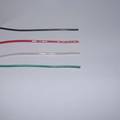
When your home is piped, youíll have to have another type of wire. Single strand wire is insulated and many of these can be pulled into the same pipe. Normally, youíll be using THHN wire for this installation. Triplex Wire- This is an aerial cable used by the utility companies to feed the power pole. Triplex wire ties to the wires sticking out of the weather head. Main Feeder Wires- These wires are generally type THHN wire. They are rated for 125% of the load required. Main feeder wires are generally black insulated wires coming out of the service weather head. Panel Feed Wires- This is another type of THHN wire. A typical 100-amp service has a #2 THHN set of wires. They are rated at 125 amps. This protects the wires if the amperage was a full 100 amps. Non-Metallic Sheathed Wire (NM)- Often called Romex, NM is a plastic coated wire that has either two or three conductors and a bare ground wire. This can be termed as the typical wiring used in most of the houses. The rating for non-metallic sheathed wire is either 15 amps, 20 amps, or 30 amps, based upon the installation. Single Strand Wire- This type of electrical wire is insulated and many of them can be pulled into the same pipe. Generally THHN wire is used for this type of installation. Electrical Wires Types - Metal Wires Different metals and their alloys are used to make various types of metal wires for electrical wiring requirements in a home. These electrical wires types can be described as explained below. 6. Copper Electrical Wire Copper has the most repautable status among all types of electrical wiring. Copper cables are preferred as home wiring solution and also for electrical appliances because copper is a very good conductor of electricity and is very easy to mold and bend. The price of copper wires too are reasonable for residential use. 7. Aluminum Electrical Wire Aluminum has more resources than copper and thus is cheaper too. Although aluminium cables are less conductive material, they can be easily shaped. However, if using aluminum wire for carrying the same amount of electricity as is expected of copper wires than it should be have greater diameter. There are certain disadvantages of aluminum wires regarding electrical safety in homes. Problems have been faced due to excess heat when aluminum wires carry the same load that a copper wire of the same size can normally carry. It also poses fire hazard. Aluminum wiring (in larger diameters), today is mainly used for commercial purposes. Some modern electrical appliances too have aluminum wires. 8. Alloys and Silver Wires Electrical wires that are made from alloys generally use aluminum and copper to get advantage of both performance and cost effectiveness. However, this type of electrical wiring is normally not found in homes. As far as silver wires are concerned, this metal is the best conductor of electricity and is used in electrical wires for high temperature conditions. However, there are certain problems with silver wires- first, silver is not so easy to bend and secondly it costs much too higher. Many people use silver wiring in their homes audio and video equipment. This makes signals travel better through pure silver but the cost factor is really a concern. Also the amount of silver makes a difference as many of these wires contain a percentage of copper. A small amount of silver in wiring, naturally, doesn't make noticeable difference in signal quality for any home electronics. These were some basic facts about home electrical wiring along with the options available in electrical wires types. Now, its upto you as to how you decide which electric wire to choose for your home wiring- based on your budget, advantages, disadvantages of electrical wire types as well as electrical safety issue! |
